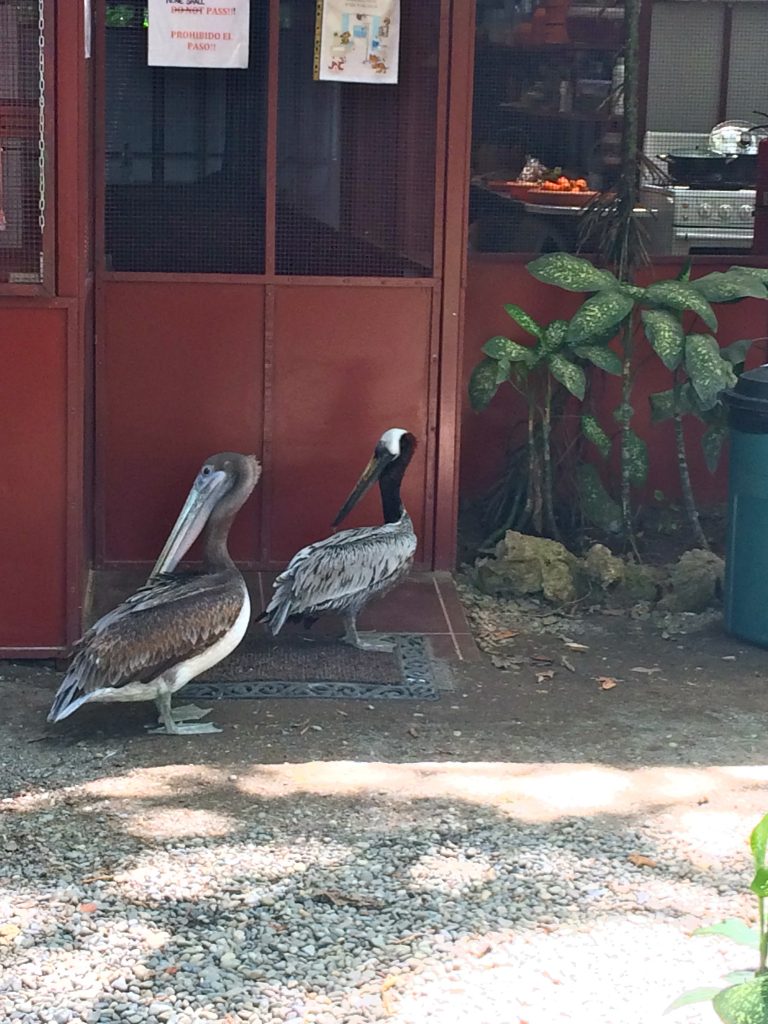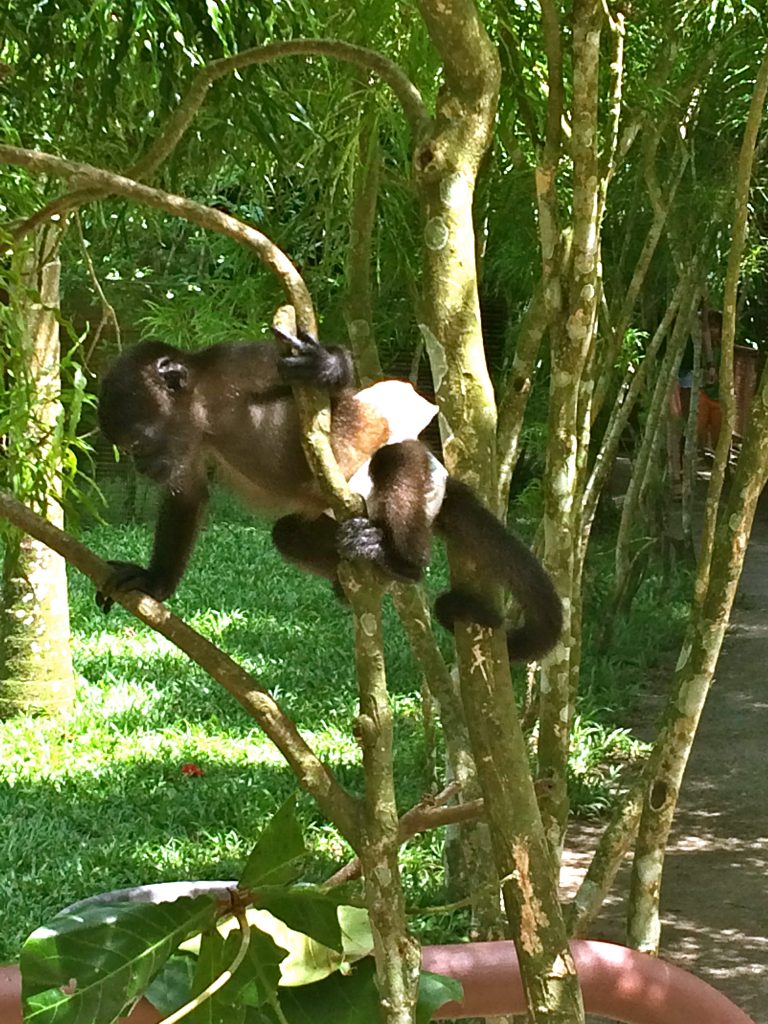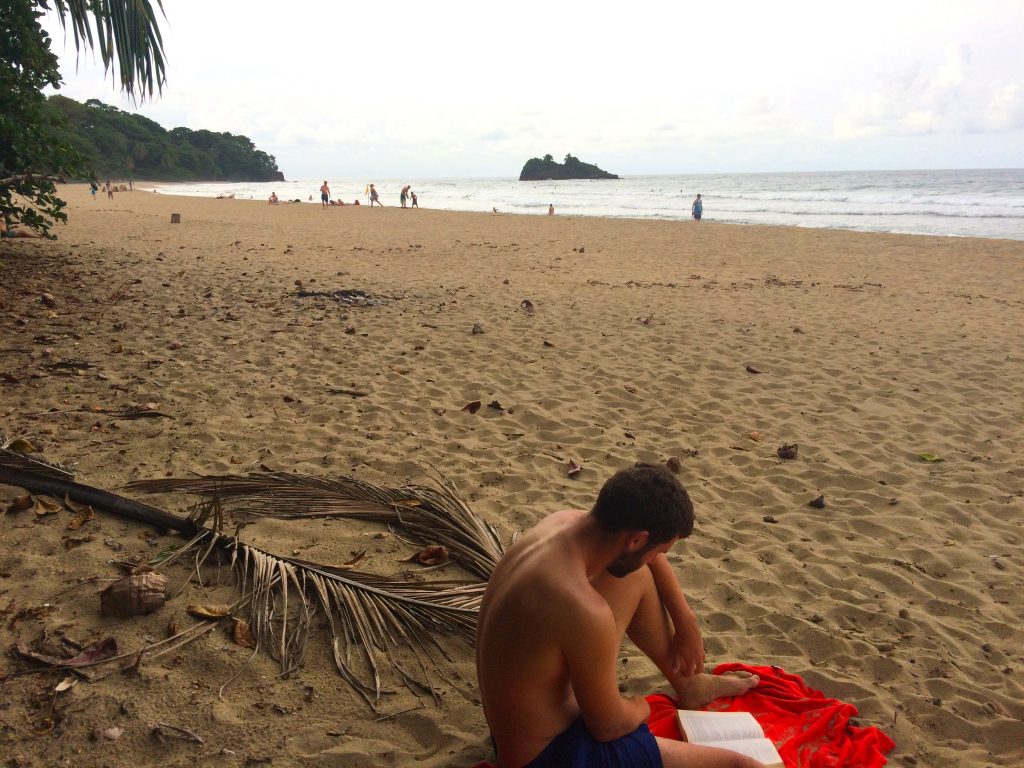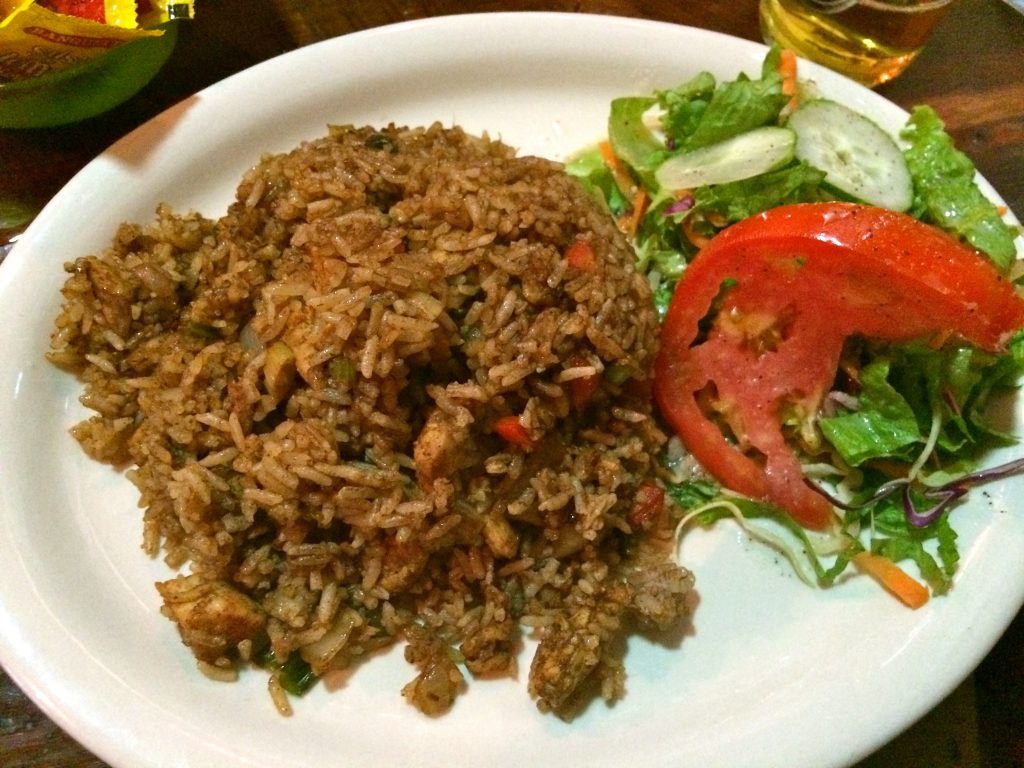We left Panama City and made our way across the border to Puerto Viejo in Costa Rica. We were originally planning on taking local buses, but in order to fly into Panama we had to have a bus ticket out of the country, so we had booked a pretty pricey shuttle that unfortunately we could not cancel. So it turned out that getting from Panama Costa Rica was really easy. At the border crossing, there is usually a rickety bridge to walk across, which we were looking forward to, but this has now been replaced by a more concrete structure. The area around the border is full of banana farms. Banana trees as far as the eye can see, and some pretty interesting automatic banana moving apparatus.

Puerto Viejo is on the Caribbean cost of Costa Rica, however, the beach in front of the town is not very attractive. We were a bit disappointed by this, but we needed to find somewhere to stay so braved the heat and carted our bags around to search for a hostel. We ended up staying at Hotel Pura Vida, which is really nice. It’s more like a quiet hotel than a hostel, but cheap, so was a nice place to relax for a couple of days. It is also right opposite a football field so Andrew spent quite a bit of time watching football and joining in some games with the kids.

The thing to do in Puerto Viejo is to rent a bicycle. This definitely changed our opinion of the town pretty fast. Exploring Puerto Viejo and the surrounding beaches by bicycle was a fantastic way to see the area. The roads are surrounded by forest and jungle and makes for some pretty great views as you are cruising around.


Our highlight was our visit to the Jaguar Rescue Centre. It is located just down the road at Playa Chiquita, which is an easy cycle. It costs US$20 per person to get in, but it is well worth it. Everyone working there are volunteers and the money goes directly into helping injured animals and re-habilitating them into the wild. Keeping wild animals as pets in Costa Rica is illegal (except for very strict permits), however, due to the amazing animals that reside in Costa Rica, the illegal exotic pet trade is a problem. The Jaguar Rescue Centre takes in animals that have been hit by cars, kept illegally or abandoned and attempt to rehabilitate them back into the wild. Unfortunately not all the animals can be rehabilitated as they have many problems. One funny story is that the government will not allow them to release a lot of the parrots because they can talk (and often say swear words), which they could potentially teach to the wild parrot population. We loved our time at the rescue centre, it was really informative and we were impressed with the way they are making a difference for the animals in the area. Plus I finally got to see a toucan up close! This particular toucan is one that they released a long time ago but comes back for a visit now and again. I was very excited!



We went swimming at Playa Cocles, which is also just down the road from Puerto Viejo. It was quite a nice beach and it was good to relax and swim in some big waves. Also, the food in Puerto Viejo was really good. Their version of beans and rice was delicious!

After just a couple of nights in Puerto Viejo it was time to leave. This place surprised us, especially after our first impression, and we really had a great time. I mean we got to see a toucan up close – definitely a dream come true!
Here is a breakdown of our costs for 2 days:
Budget = US$320 (NZ$470)
Accommodation – US$60
Activities – US$50
Food/Drink – US$108
Travel (incl. Taxis) – US$68
Miscellaneous – US$21
Total spent – US$307 (NZ$455)
So, we ended up being US$13 (NZ$20) under budget. Costa Rica is really expensive. You are looking at USA prices most of the time, so we knew we had to have a high budget to do any activities.




